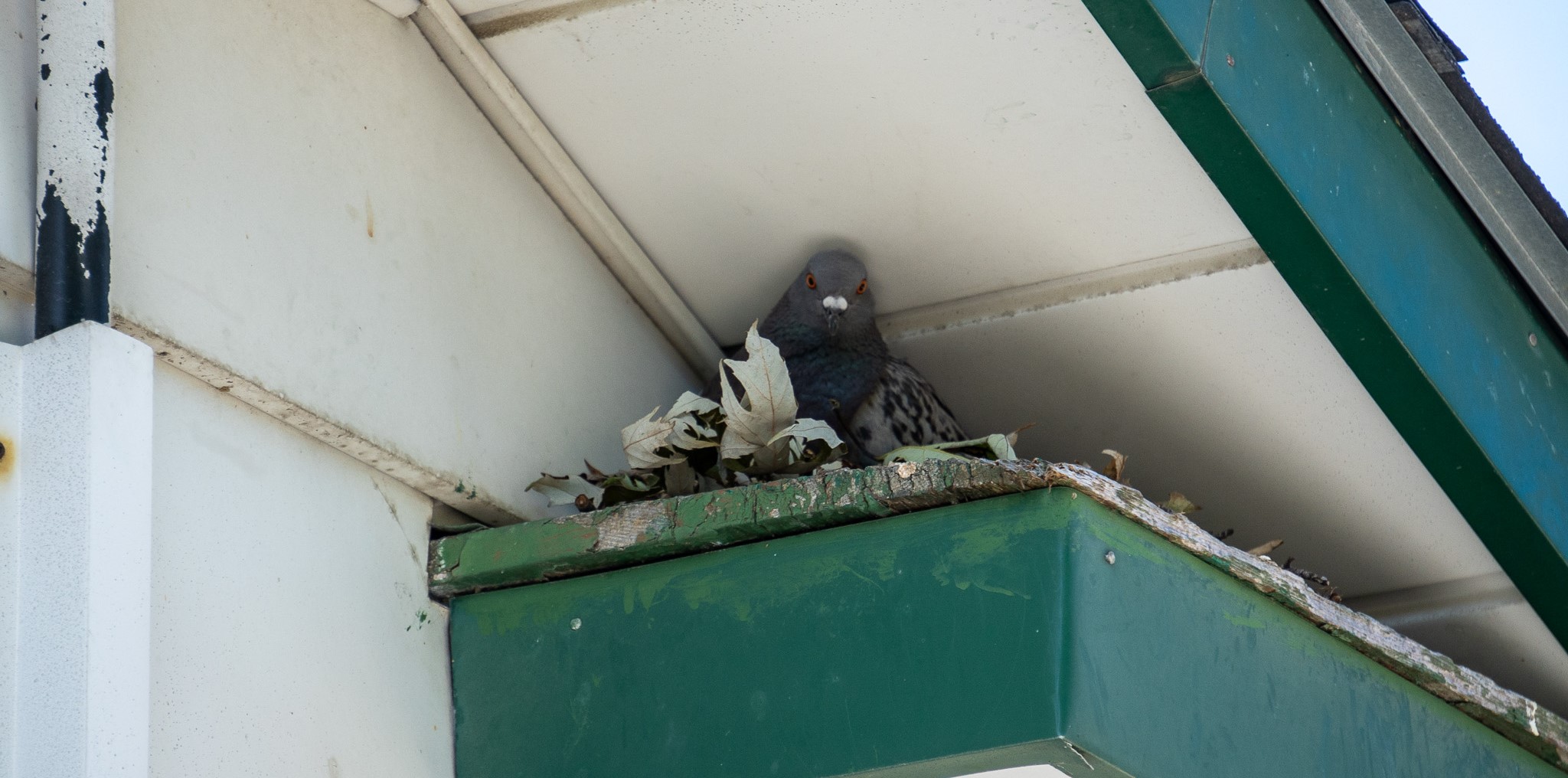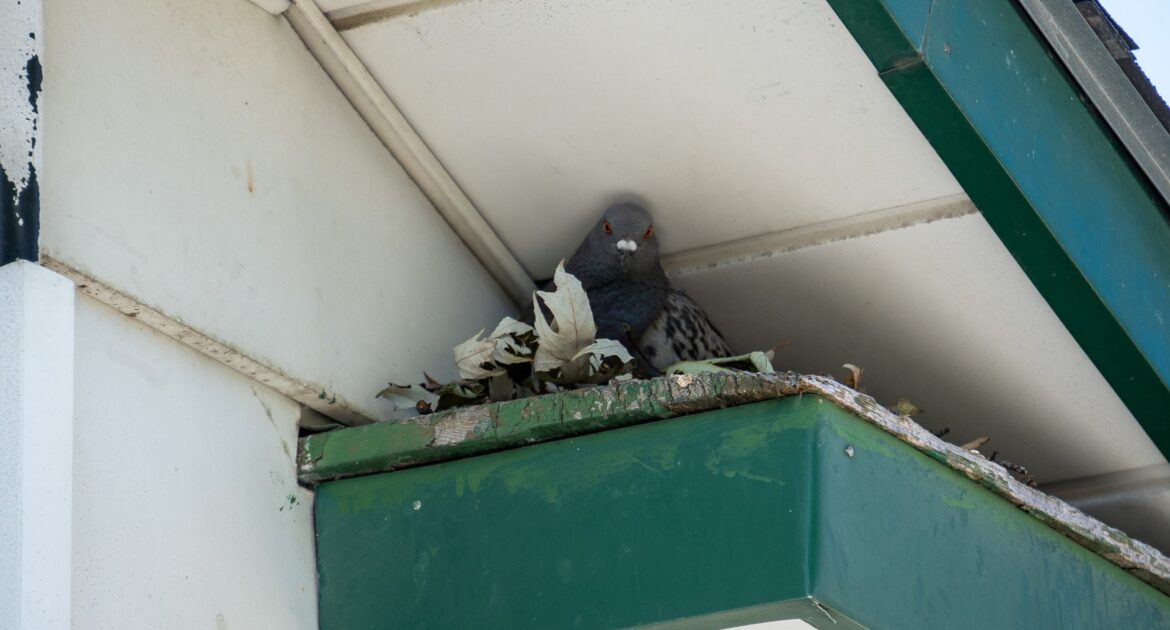Most of us enjoy watching birds fluttering around outside or hearing their chirps in the morning. But when these feathered visitors get too comfortable around your home, they can cause problems you wouldn’t expect. From damaging your roof to messing with your home’s energy efficiency, birds can be responsible for some serious headaches.
You might not think of birds as a threat to your home, but their habits can create expensive issues if ignored. Nesting in vents and gutters, leaving behind acidic droppings, drilling into siding, tearing up shingles, and messing with solar panels are just some of the ways they can hurt your home. It’s clear that bird damage prevention is essential for proper home exterior protection. By using effective bird-proofing solutions, you can keep these risks at bay.
Here, we’ll break down five surprising ways birds can damage your home’s exterior. We will also give tips on what you can do to protect your property. If you notice any damage to your home or business, reach out to our experts at Skedaddle Wildlife Control in the Durham region.
1. Nesting in Vents and Gutters
Birds look for safe, sheltered spaces to build their nests, and unfortunately, your vents, gutters, and chimneys often fit the bill. While a bird’s nest may seem harmless, the blockages they create can lead to some significant problems.
Clogged gutters, for example, don’t do their job of guiding rainwater away from your home. Instead, water can pool on your roof or drip down your walls, causing leaks, mould growth, and even damage to your foundation. Similarly, when birds nest inside vents, they block proper airflow. This buildup can lead to mould in your home or even a fire hazard if the vent is connected to your dryer.
Picture this scenario: You’ve been noticing water stains on your ceiling after a rainy week, only to discover that a bird’s nest in your gutter is the culprit. What starts as a small issue can grow into a big, costly repair.
2. Acidic Droppings Causing Structural Damage
Bird droppings aren’t just unsightly—they’re also corrosive. Their droppings contain uric acid, which can eat away at many surfaces over time, including brick, wood, paint, and metal. This means the pretty siding on your home, the roof tiles, or even your patio furniture could be at risk.
Over time, if droppings aren’t cleaned up, they can cause permanent stains or weaken materials, leading to costly repairs. For example, once the paint on your siding starts to peel because of bird droppings, your home’s exterior is left vulnerable to further damage from water and pests.
The worst part? Birds may return to the same spots over and over, making it hard to stay ahead of the damage.
3. Pecking and Drilling into Siding
Some birds, like woodpeckers, can wreak havoc on your home as they peck away at your siding in search of food, like insects, or to create nesting spots. That tapping sound might seem innocent enough at first, but the damage it causes is no joke.
Holes in siding do more than make your house look bad—they also provide entry points for moisture, which can lead to rot, and give other pests a way to get inside your home. Plus, these holes can reduce your home’s insulation, which could drive up your energy bills.
Imagine trying to repair a wooden fascia board that’s riddled with holes from a woodpecker. It’s a time-consuming and expensive fix that could have been avoided with the right bird-proofing solutions.
4. Destroying Roof Shingles and Insulation
Your roof is another favourite spot for birds, especially when they’re searching for insects or building nests. Birds can pull apart shingles, loosening them or tearing them off completely. Once shingles are damaged, your roof becomes far more vulnerable to water damage, leaks, and mould growth.
The problem extends to your attic, too. If birds manage to get inside, they’ll often mess with your insulation while building their nests. Insulation pulled apart or shifted by nesting birds means your home won’t stay as warm in the winter or cool in the summer—which hits your wallet when it’s time to pay utility bills.
Think of a small bird that starts lifting shingles bit by bit. Over time, that small damage turns into large leaks and much pricier repairs.
5. Blocking Solar Panels and Electrical Fixtures
If your home features solar panels, birds can become a major problem. They often roost underneath them, leaving droppings and nesting materials that reduce their efficiency. Blockages underneath these panels prevent them from getting enough sunlight, reducing the energy output.
Electrical fixtures are another target. Birds may nest in outdoor light fixtures, exhaust fans, or near exposed wiring. Chewed wires or blocked airways present serious safety hazards, including the potential for fires.
Take, for instance, a bird’s nest built in a vented soffit. While it might seem minor at first, the damage grows, and soon you’re dealing with compromised electrical systems or ventilation that doesn’t work correctly.
Protecting Your Home with Bird-proofing Solutions
Keeping your home safe from bird damage doesn’t have to be complicated. By taking a few proactive steps, you can stop potential problems before they arise. Here’s a closer look at some effective bird-proofing solutions and why they work so well.
- Install Vent Covers and Gutter Guards: Vent covers keep birds from nesting in vents while still allowing airflow. Adding gutter guards stops birds from turning your gutters into nesting spots, which can clog water flow and lead to leaks or foundation damage.
- Use Reflective or Angled Surfaces: Reflective materials like shiny tape or angled guards make it harder for birds to roost. These simple tools work by either scaring birds away or creating surfaces that are uncomfortable for them to perch on.
- Regularly Repair Damage: Fixing small issues like missing shingles or chipped siding right away keeps birds from making those spots worse. Regular maintenance stops problems before they grow into costly repairs.
- Keep Bird Feeders a Safe Distance Away: Placing bird feeders further from your home reduces the chances of birds exploring problem areas. An open spot in your yard keeps them happy while keeping your house safe.
- Clean Up Droppings and Nesting Materials Often: Scrubbing away bird droppings prevents acidic damage to siding, decks, or metal surfaces. Clearing away old nests from vents and gutters keeps airflow and drainage working properly.
Say Goodbye to Bird Damage
While birds may not seem like much of a threat, the damage they cause can become extensive and expensive if ignored. By taking action and investing in bird damage prevention early, you can save yourself from costly repairs down the road.
At Skedaddle Humane Wildlife Control in the Durham Region, we understand how frustrating and overwhelming these problems can be. That’s why we specialize in using humane and effective methods to remove birds and protect your home from future issues—all without harming the animals.
If you’re looking for expert help with bird-proofing solutions and need home exterior protection that lasts, don’t hesitate to give us a call. Together, we can ensure your home stays safe, clean, and free from these surprising bird-related damages. Reach out to us today to leave the worry behind.




